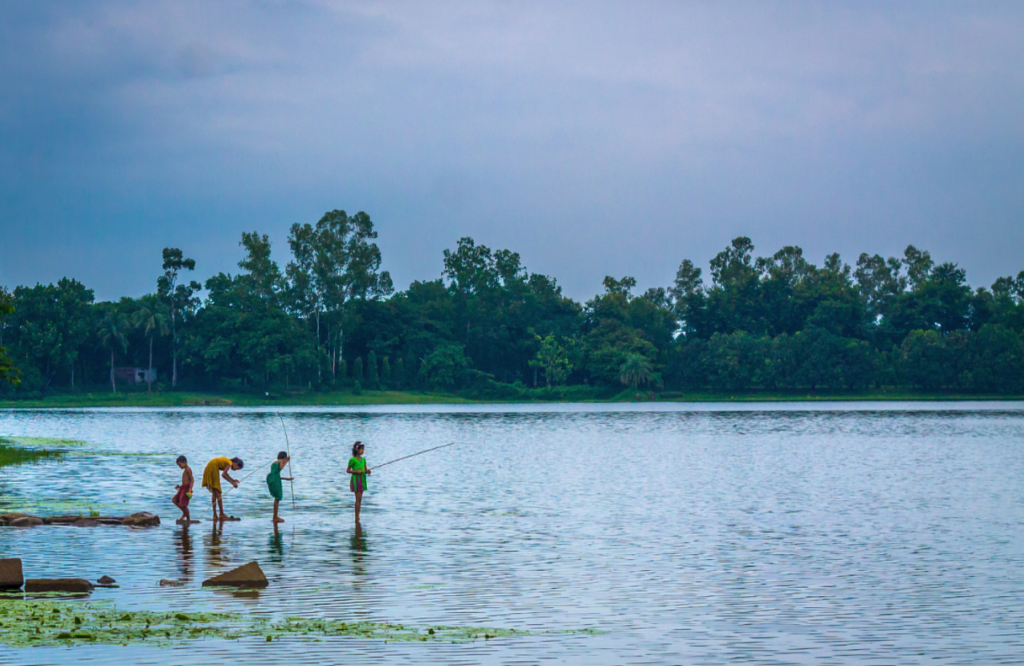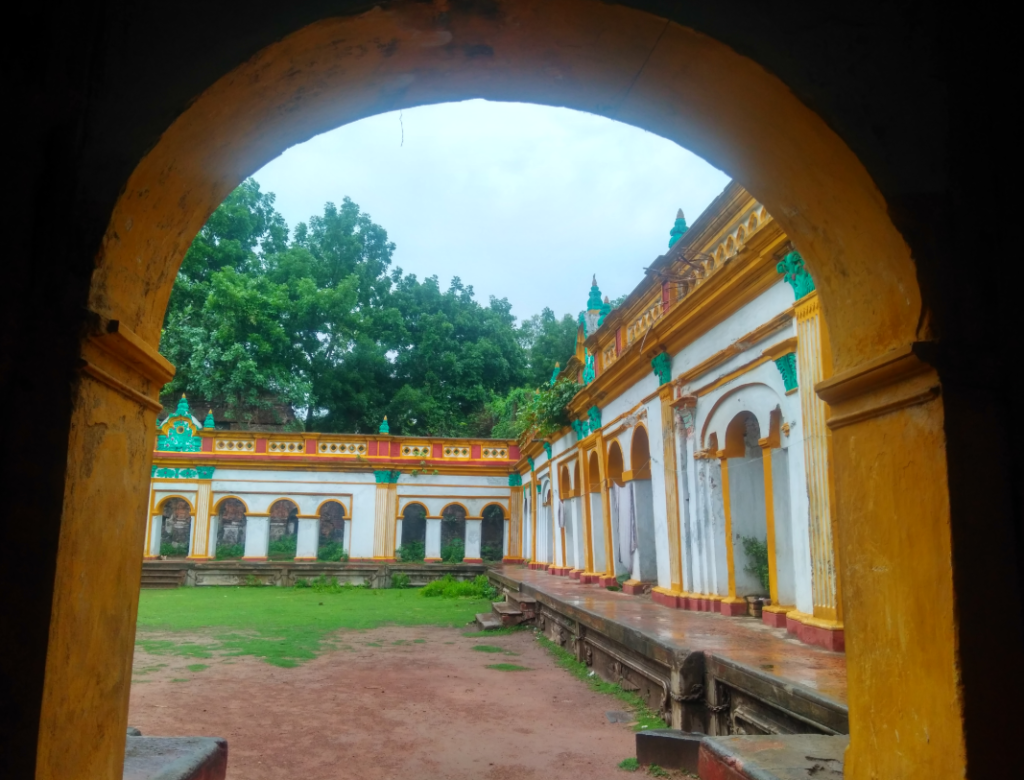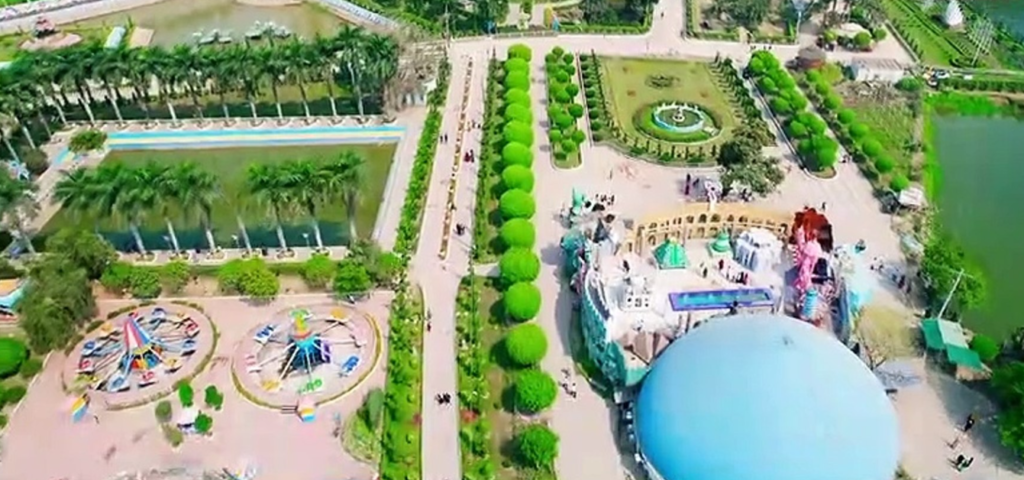Dinajpur, one of Bangladesh’s most historically significant districts, lies in the Rangpur Division. Known for its architectural marvels, cultural vibrancy, and lush landscapes, Dinajpur is a district that promises an enriching experience for every visitor. From the ancient Kantaji Temple to the serene Ramsagar Lake, the district offers a perfect blend of history, culture, and natural beauty.
A Glimpse into History
Dinajpur’s roots trace back to the Pala and Sena dynasties, who played pivotal roles in shaping the region’s cultural and religious landscape. During the Mughal period, Dinajpur flourished as a trade hub and cultural center. The district also bears the legacy of the British colonial era, which left its mark on the region’s architecture and socio-economic fabric.
Geographic Significance of Dinajpur
Dinajpur, located in the northwestern part of Bangladesh, shares its borders with India on the north and west. The district’s terrain is characterized by fertile plains, sprawling paddy fields, and tranquil rivers like the Atrai, Punarbhaba, and Karatoya. These rivers not only enhance the district’s scenic beauty but also contribute significantly to its agricultural prosperity.
Must-Visit Attractions
1. Kantaji Temple (Kantanagar Temple)
A jewel of terracotta architecture, the Kantaji Temple is a Hindu temple dedicated to Lord Krishna. Built in the 18th century by Maharaja Pran Nath, the temple is adorned with intricate terracotta panels that depict scenes from Hindu mythology, social life, and flora and fauna. The temple’s exquisite craftsmanship attracts history buffs and art lovers alike.
2. Ramsagar National Park

Home to the largest man-made lake in Bangladesh, Ramsagar Lake, this park is a haven for nature lovers. Ramsagar National Park is ideal for picnics, birdwatching, and enjoying the serene beauty of its surroundings. The lake is also historically significant, having been built during the 18th century to serve as a water reservoir.
3. Dinajpur Rajbari

The Dinajpur Rajbari, or Royal Palace, stands as a testament to the district’s regal past. Built during the 18th century, the palace showcases a unique blend of Mughal and British architectural styles. Although parts of the palace are in ruins, its grandeur remains evident, making it a popular tourist destination.
4. Nayabad Mosque

Constructed in the late 18th century by Muslim artisans who worked on the Kantaji Temple, Nayabad Mosque is a beautiful example of Mughal architecture. Surrounded by lush greenery, this mosque reflects the harmonious coexistence of different cultures in Dinajpur’s history.
5. Swapnapuri Amusement Park

Located in the Nawabganj upazila, Swapnapuri Amusement Park offers a delightful mix of entertainment and natural beauty. With its rides, artificial lakes, and scenic gardens, the park is a favorite destination for families and children.
Upazilas in Dinajpur
Dinajpur district comprises 13 upazilas, each with unique features and attractions:
- Dinajpur Sadar: The administrative hub and home to the Kantaji Temple.
- Birganj: Known for its rural charm and vibrant markets.
- Parbatipur: A major railway hub with historical significance.
- Phulbari: Features coal mines and picturesque landscapes.
- Birampur: Known for its agricultural output and handicrafts.
- Nawabganj: Houses the Swapnapuri Amusement Park.
- Chirirbandar: A tranquil area with scenic rural vistas.
- Kaharole: The location of the historic Nayabad Mosque.
- Khansama: Renowned for its fertile farmlands.
- Bochaganj: A peaceful upazila with a focus on traditional farming.
- Hakimpur: A border upazila known for trade and commerce.
- Birol: Hosts lively cultural festivals and events.
- Ghoraghat: Rich in archaeological sites and historical landmarks.
Cultural Heritage
Dinajpur’s cultural landscape is as vibrant as its history. Traditional music forms like Baul, Jari, and Bhawaiya thrive in the district, echoing its rich artistic heritage. Festivals such as Durga Puja, Eid, and the Nabanna (Harvest) Festival are celebrated with great fervor, showcasing the region’s communal harmony and vibrant traditions.
Economic Importance
Dinajpur is often called the “Granary of Bengal” due to its significant contribution to Bangladesh’s agricultural output. The district is a leading producer of rice, wheat, and potatoes. Additionally, Dinajpur is famous for its high-quality lychees and mangoes, which are in demand across the country.
Famous Personalities of Dinajpur
Dinajpur has been home to many renowned individuals who have made significant contributions in various fields:
- Dwijendralal Ray: A celebrated poet, playwright, and composer known for his contributions to Bengali literature and music.
- Sir Prafulla Chandra Roy: A prominent chemist and philanthropist who played a pivotal role in the development of modern chemistry in Bengal.
- Kazi Md. Shafiqur Rahman: A notable historian and academic whose works have enriched Bangladesh’s cultural heritage.
Conclusion
Dinajpur is a district that effortlessly blends history, culture, and natural beauty. From the awe-inspiring Kantaji Temple to the serene Ramsagar Lake, and from its vibrant festivals to its rich agricultural bounty, Dinajpur offers something for everyone. A visit to this enchanting district is not just a journey through its scenic landscapes but also a deep dive into its rich cultural and historical tapestry.
Whether you’re a history enthusiast, a nature lover, or a cultural explorer, Dinajpur promises a memorable experience that will leave you captivated.




